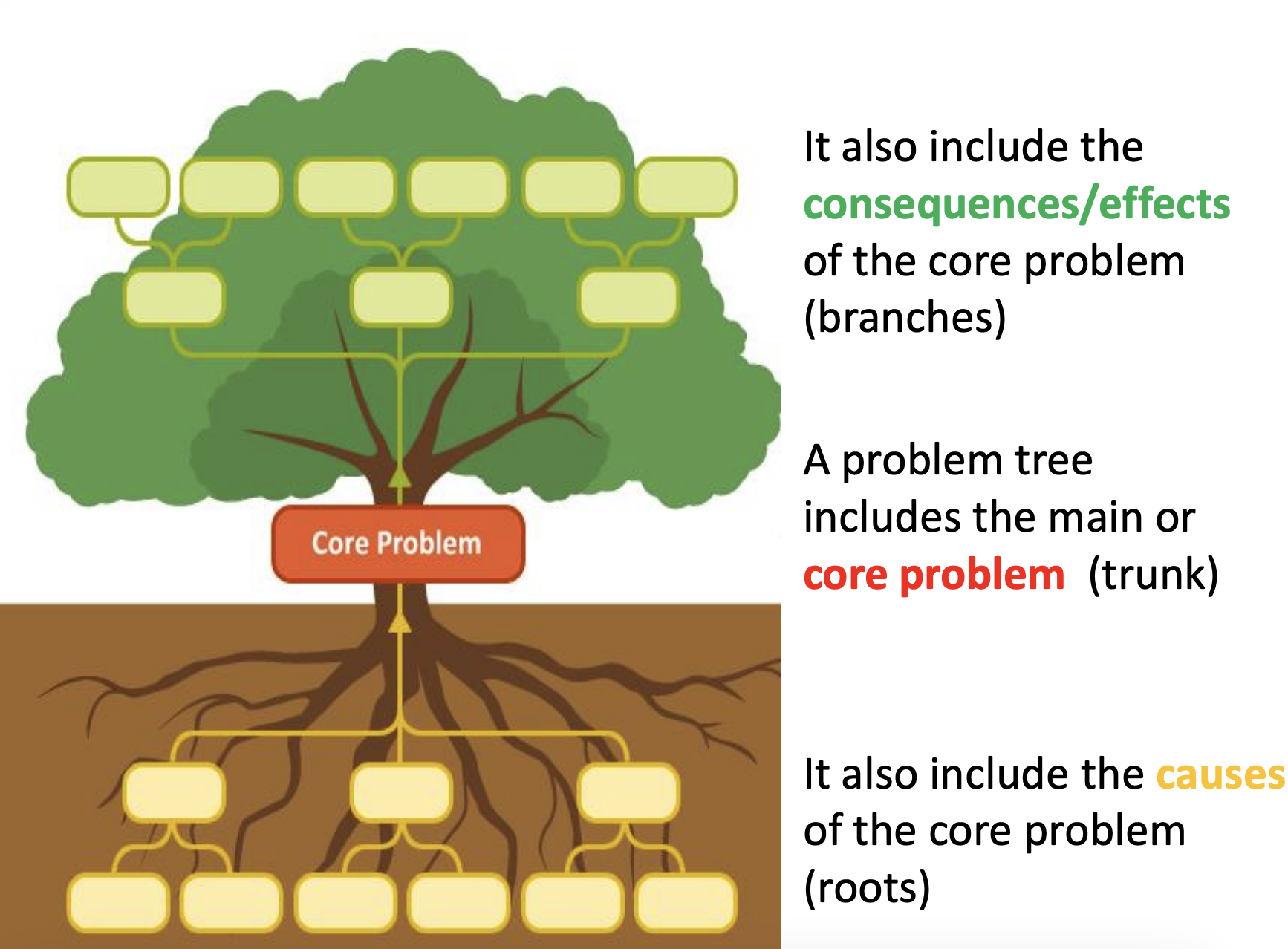1.4.6 Identifying advocacy goals and targets
The key targets for advocacy are duty bearers i.e. those bodies or individuals that represent institutionalised power which gives them the responsibility to ensure that OPDs rights are protected and have the authority to make changes for OPDs.
Therefore, the target is the person (or group of people) with the power to respond to demand(goal) and move the processes in relation to the issue(problem). These targets could be institutions or persons within institutions. Further, the identification of an advocacy target is guided by the question: “Who has the power to make things happen?”
To identify the advocacy target, the problem tree, which is also referred to as situational analysis, can help map out the anatomy of the causes and effects around an issue.
The Problem Tree structure brings several advantages:
-
The problem can be broken down into manageable and definable chunks. This enables a clearer prioritisation of factors and helps focus objectives;
-
There is more understanding of the problem and its often interconnected and sometimes contradictory causes. This is often the first step in finding win-win solutions;
-
It identifies the central issues and arguments, and can help establish who and what the political actors and processes are at each stage, and;
-
The process of analysis often helps build a shared sense of understanding, purpose and action.
Using the problem tree is a two-step process that involves: (i) discussing and agreeing on the problem or issue (the trunk) to be analysed, and (ii) Identifying the causes of the focal problem (the roots) and then the effects ( the branches). The figure below illustrates the problem tree analysis approach.

[source: FAO]
Advocacy is most effective when specific targets are correctly identified. Stakeholder mapping and analysis has been used to correctly identify the targets by providing a means of understanding power and allyship decisions, and how to liaise with different stakeholders accordingly.
The figure below illustrates a matrix to guide on how to map out stakeholders according to both power and support or opposition to a specific cause or goal.

[source: https://www.open.edu/openlearncreate/mod/resource/view.php?id=53741]
The X-axis or the horizontal axis represents the level of support for a specific cause or goal. The Y-axis or the vertical axis represents the level of power that the stakeholder has in relation to the goal.
The categorisation of different stakeholders will be dependent on where they are on the grid or map. In the upper right-hand corner are stakeholders with high power and high influence. These are allies and potential champions. They do not need to be convinced and can be advocacy partners.
In the middle top, are stakeholders who have neutral support, and medium to high power. These stakeholders are good advocacy targets; if neutral, their mind can be changed and one can get more support on the issue.
The lower right-hand corner has the stakeholders with low or medium power and high support. They can be good advocacy partners and help do the work, but should not be the stakeholders delivering the key messages.
The lower left-hand corner are stakeholders with low power, who are opposed / unsupportive. They do not need to be targeted.

| Previous | Next |






